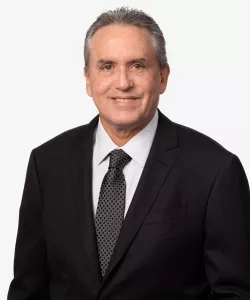Recent Opinion from New York State Court Curtails Indenture Trustees’ Authority to Commence Pre-Default Actions
New York County Supreme Court Justice Schecter dismissed a fraudulent conveyance action brought by UMB Bank, N.A., the indenture trustee for certain of Neiman Marcus’ senior notes, on the basis that the applicable indenture did not grant UMB authority and power to assert claims prior to an event of default, even where the action was brought at the direction noteholders.
Parties to indentures intending to grant the indenture trustee authority to assert pre-event of default claims are advised to draft (or amend) the indenture to include language that expressly provides for this power. Otherwise, there is risk that such actions could be dismissed. Indenture trustees should also consider seeking declaratory relief (or trust instruction from the court). If, however, there is real and present risk to the holders and immediate action is critical to avoid irreparable harm, the trustee should seek the advice of counsel, use common sense and work within the reported decisions prior to taking any remedial action.
Indenture Trustee Authority
It is important to define indenture trustees’ pre-default duties because, in part, activist holders are increasingly making pre-default demands on trustees. It is fairly common now for noteholders to direct a trustee to exercise remedial type rights or take other actions prior to an event of default.
Indenture trustees are contractual creatures, whose powers and authority are established by the very indentures that create them. Virtually every indenture contains two provisions relevant to the indenture trustee’s ability to exercise its power: (i) a certain amount of noteholders (often a majority in principal amount) may direct the indenture trustee to exercise any powers conferred to it by the indenture; and (ii) if an event of default occurs and is continuing, the indenture trustee “may pursue any available remedy to collect the payment of principal of or interest … or to enforce the performance of any provision of the Notes.”
UMB Bank, N.A. as Tr. for 8% Senior Cash Pay Notes Due 2021 v. Neiman Marcus Grp., Inc.,[1] a recent decision from the New York County Supreme Court, teaches us that indenture trustees may only perform such acts set out in their indentures. Because most indentures only convey to indenture trustees limited, ministerial and administrative powers prior to a default, noteholders may only direct the indenture trustee to perform such ministerial and administrative acts. Only after an event of default occurred and is continuing may the indenture trustee may pursue any available remedy.
UMB Bank v. Neiman Marcus
In Neiman Marcus, the court sets the bounds for what pre-event of default acts an indenture trustee is permitted to take at the direction of the noteholders: only those expressly conveyed in the indenture. UMB Bank is indenture trustee (the “Indenture Trustee”) for the holders of approximately $1.5 billion in Cash Pay Notes and PIK Notes (collectively, the “Notes”) issued pursuant to three indentures (the “Indentures”) in connection with Ares Management’s 2013 leveraged buyout of Neiman Marcus.[2] Neiman Marcus continued to struggle following the LBO and in 2017-18, concerned about its investment, Ares attempted to insulate the German luxury retailer MyTheresa (a subsidiary of Nieman Marcus since 2014 and its most valuable asset) from Nieman Marcus’ other creditors by conveying it to Ares’ parent for no consideration.[3] According to publically available information, Nieman Marcus was insolvent at the time of this conveyance.[4]
Soon after (and after a noteholder had commenced a lawsuit challenging the transaction), Ares and Neiman Marcus attempted to obtain the Noteholders’ ratification of the transfer of MyTheresa through an exchange transaction for new notes secured by a partial lien on MyThersa’s stock and preferred equity in MyTheresa’s parent that would extend the Notes’ maturity (the “2019 Exchange Transaction”).[5] To do so, the parties amended the Indentures to eliminate many covenants and events of defaults and waive all past breaches and defaults.[6] Not long after the amendments went into effect (upon the consent of more than 90% of the Noteholders), the Indenture Trustee commenced Neiman Marcus asserting claims of actual and constructive fraudulent conveyance against the parties to the MyTheresa transfers and tortious interference with contract against Ares.[7]
Ares moved to dismiss Neiman Marcus, arguing that the Indenture Trustee lacked standing to bring the action because no event of default was continuing. The Indentures contain standard provisions establishing the Indenture Trustee’s authority to act. Section 6.3 of the Indentures sets forth (emphasis added):
If an Event of Default occurs and is continuing, the Trustee may pursue any available remedy to collect the payment of principal of or interest on the Notes or to enforce the performance of any provision of the Notes, this Indenture (including sums owed to the Trustee and its agents and counsel) and the Guarantees.
Section 6.5 of the Indentures sets forth (emphasis added):
Holders of a majority in principal amount of the then outstanding Notes may direct the time, method and place of conducting any proceeding for any remedy available to the Trustee or of exercising any trust or power conferred on the Trustee.
Ares argued, and the Court agreed, that the Indenture Trustee’s claims could not be asserted under either section. With respect to section 6.3, no event of default was then occurring, so the Indenture Trustee was not free to pursue any available remedy. The Noteholders had waived all past breaches and defaults in the 2019 Exchange Transaction, the Noteholders had not suffered a missed payment and the Notes had not yet matured.[8]
Likewise, the Court found, section 6.5 “is not an independent source of authority for the [Indenture] Trustee to act.”[9] Unlike section 6.3, which permits the Indenture Trustee to pursue “any available remedy” upon an event of default, section 6.5 “simply details how Noteholders may direct the [Indenture] Trustee to conduct ‘any proceeding for any remedy’ that is already ‘available to the [Indenture Trustee] or of exercising any trust or power’ already ‘conferred on the [Indenture Trustee].’”[10] The remedies available to the Indenture Trustee are set forth in other provisions of the Indenture, such as section 6.3 (which is limited by an event of default threshold), and no provision provides (or even contemplates) for the Indenture Trustee to assert pre-event-of-default actions.[11] In sum, a Noteholder direction under section 6.5 cannot direct the Indenture Trustee to perform acts that the balance of the Indentures do not authorize the Indenture Trustee to conduct.
The Court noted that, in addition to a plain reading of the Indentures, public policy also compels this conclusion: “These are sophisticated parties engaged in a sophisticated commercial transaction involving a [Indenture] Trustee with authority stemming solely from their own intricate agreements. Their contracts must be enforced in the most predicable manner consistent with their clear terms.”[12]
Takeaway and Practice Points To Consider
Prior to default, indenture trustees only have the duties specifically set forth in the indenture.
Neiman Marcus supplements the New York Court of Appeals prior decision Cortlandt St. Recovery Corp. v. Bonderman, where the Court held that indenture trustees have standing to pursue “all available remedies available at law and in equity” to collect the payment of outstanding amounts or other remedial rights under the notes governed by an indenture, provided such remedies are sought for the benefit of all noteholders.[13] In Cortland, an event of default had occurred and was continuing and the indenture trustee was acting under a provision with language nearly identical to section 6.3 of the Indentures. The Neiman Marcus decision, on the contrary, addresses the limits on an indenture trustee’s standing to pursue pre-event of default claims at the noteholders’ direction; indenture trustees do not have standing to perform acts beyond what the indenture permits them to perform, even if at the noteholders’ direction. Therefore it will be critical that indenture trustees carefully evaluate and understand their duties and obligations pre-event of default.
While Justice Schecter’s decision in Neiman Marcus relied on the dispositive language in the specific Indenture at issue, such provision is nearly identical to the language contained in the American Bar Association’s Revised Model Simplified Indenture.[14] For that reason, and because indentures are generally interpreted uniformly in order to create certainty and predictability in the marketplace, the court’s reasoning will likely have broad applicability.[15]
However, it is unclear how this decision will affect other kinds of proceedings initiated by a trustee to protect noteholders. For example, an indenture trustee may assert a claim that an issuer’s particular prior action or prospective action constituted or would constitute an event of default under an indenture. In such a situation, a trustee may on its own, or at the direction of its noteholders, seek a temporary restraining order to preclude an issuer from consummating a publicly announced transaction that would cause an event of default under the indenture and irreparably harm to noteholders. In Wilmington Tr. Comp as Indenture Tr. for TruPS Documents v. BankAtlantic Bancorp., No. 7068 VCL (Ch. Ct. Del. 2012),[16] the indenture trustee, represented by Arent Fox, did just that. In BankAtlantic, Wilmington Trust sought and obtained a permanent injunction against BankAtlantic, enjoining a sale of substantially all of the its assets that would have left the issuer with limited, non-performing assets in violation of the successor obligor provisions of the applicable indenture. The pre-event of default relief obtained was essential to preserving value for the noteholders and avoiding a breach of the indenture. In another example, Merrimack Pharm Inc. v. Merrimack Pharm Inc., No. 2017-0199-JTL (Ch. Ct. Del. 2017), Wells Fargo Bank N.A as indenture trustee, represented by Arent Fox, sought declaratory relief after an issuer announced a sale transaction but prior to the occurrence of an event of default. The parties agreed to allow the sale to close and to hold the proceeds escrow, pending a decision, before ultimately settling the case. But again, the indenture trustee’s ability to seek relief was crucial to protecting the noteholders.
Similar declaratory actions may prove to be a prudent course of action where a trustee lacks explicit authority pre-event of default. While the most effective way for parties wishing to provide standing to indenture trustees to pursue pre-event-of-default actions (whether at the direction of noteholders or otherwise) is to carefully draft their indentures to expressly grant such authority, issuers generally draft indentures without input from the noteholders and are unlikely to provide the trustee with pre-default authority or power. Consequently, issuers may start to undertake more aggressive transactions in violation of an indenture without fear of the indenture trustee’s pre-event of default intervention, leaving noteholders with limited remedial rights until it is too late.
There is risk to the indenture trustee in taking pre-default action that is not specifically set out in the indenture. In essence, the indenture trustee would be taking action without any authority or power and the issuer could assert that the indenture trustee has violated or breached the indenture. The issuer or minority holders could also assert that such actions are not reasonable or in violation of the indenture and, therefore, not compensable under the indenture. Such risk needs to be balanced against the harm to the noteholders and the real need to take action to protect the noteholders.
For now, the three options available to indenture trustees are (i) to seek declaratory relief (to determine the rights of parties to take certain actions that may expose it to liability); (ii) to seek judicial instruction under certain state statutes (e.g., trust instruction statutes under state law, such as section 501C.0808 of the Minnesota Statutes); and (iii) lacking other guidance, to rely on common sense, the advice of counsel and attempt to work within the parameters set out in the Cortlandt and Neiman Marcus decisions.
Arent Fox’s Bankruptcy & Financial Restructuring group will continue to monitor this issue. If you have any questions, please contact Andrew Silfen, Beth Brownstein, Nicholas Marten, or the Arent Fox professional who usually handles your matters.
[1] No. 654509/2019, 2020 WL 4033014 (N.Y. Sup. Ct. July 16, 2020).
[2] Id. at *1.
[3] Id.
[4] Id.
[5] Id.
[6] Id.
[7] Id. at *2.
[8] Id. at *4.
[9] Id.
[10] Id. (emphasis in original).
[11] Id.
[12] Id. at *5.
[13] 31 N.Y.3d 30, 36, 96 N.E.3d 191, 195 (2018), a discussion for which can be found in Arent Fox’s prior Alert.
[14] Revised Model Simplified Indenture, 55 Bus. Law. 1115, 1137 (2000).
[15] Unlike Cortlandt, however, UMB Bank is a trial court decision that, while persuasive, is not binding on other courts.
[16] The Delaware Court of Chancery’s decision, In re BankAtlantic Bancorp, Inc. Litig., 39 A.3d 824 (Del. Ch. 2012), is available on its website here. (Available as of August 12, 2020.)
Contacts
- Related Practices


